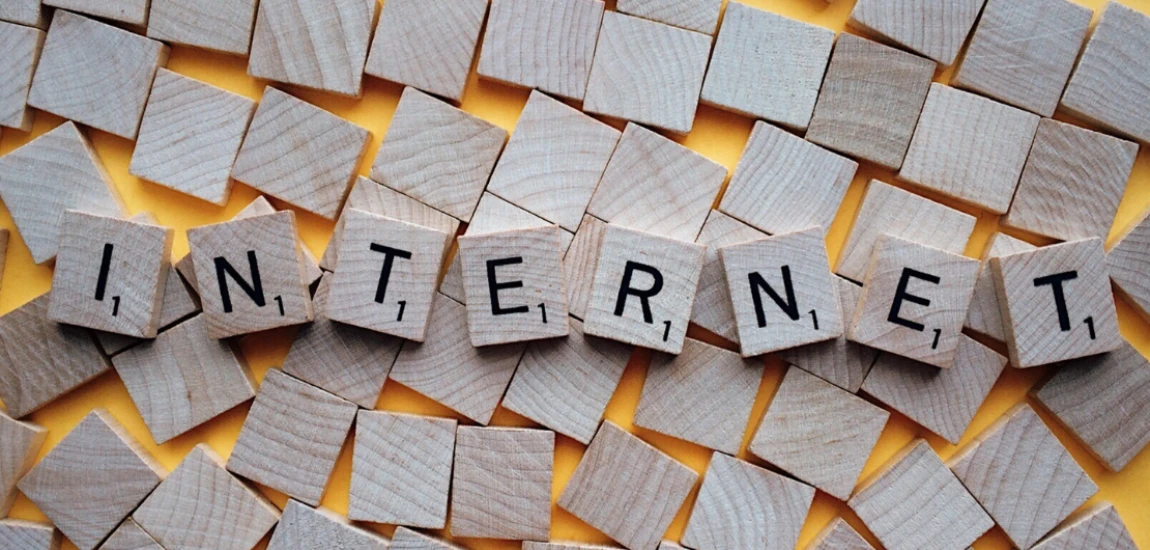The Rise of ‘Girl Internet’ vs. ‘Boy Internet’: How Algorithms Are Gendering Online Experience

The internet was once thought of as a great equalizer—a place where anyone could log in, search for information, and engage without bias. But in today’s algorithm-driven landscape, that dream feels more like a myth. Increasingly, people online talk about two different ecosystems: “Girl Internet” vs. “Boy Internet.” On one side, feeds filled with lifestyle hacks, wellness tips, emotional storytelling, fashion, and pop culture discourse. On the other, timelines dominated by finance advice, political hot takes, sports debates, gaming clips, and tech commentary.
This divide isn’t accidental. Algorithms are designed to feed us what we “engage” with, but they also reflect—and reinforce—existing gender norms. By pushing different categories of content to different audiences, platforms create what feels like two separate digital universes. The conversation around Girl Internet vs. Boy Internet highlights not only how we consume content, but also how our identities are being shaped and policed by algorithms in subtle ways.
The question is: are these online worlds harmless reflections of interests, or are they reinforcing outdated gender roles in a new digital form? To answer that, we need to examine what each “internet” looks like, why algorithms drive this split, and how it impacts culture, creativity, and even our sense of self.
What Is “Girl Internet”?
“Girl Internet” is shorthand for the type of content ecosystem typically surfaced to women or anyone coded by algorithms as feminine. It often emphasizes lifestyle, beauty, wellness, relationships, and emotional connection. Think “get ready with me” videos, skincare routines, cozy home aesthetics, book recommendations, or pop culture discourse. Girl Internet is also where communities around feminism, mental health awareness, and creative expression thrive.
The appeal of Girl Internet lies in its relatability and intimacy. Content creators often speak directly to the camera, creating a feeling of friendship rather than distant broadcasting. This personal, authentic style has helped normalize conversations about topics once considered taboo—like mental health struggles, body positivity, or workplace sexism. It has also birthed entire aesthetics like “clean girl,” “soft life,” or “hot girl walks” that spill out of digital culture and into real-world lifestyles.
However, Girl Internet isn’t without criticism. The same algorithm that pushes women toward wellness and lifestyle content can also trap them in consumer-driven cycles of beauty products, self-improvement, and endless comparison. While the surface-level vibe feels supportive, it often hides the fact that much of Girl Internet is still monetized, pushing people toward constant consumption in the name of self-care.
In short, Girl Internet is more than just a collection of videos and posts—it’s an algorithmic mirror that reflects cultural expectations around femininity, while also providing a community space for expression. The complexity lies in the balance between empowerment and commercialization, intimacy and performativity.

What Is “Boy Internet”?
If Girl Internet is cozy, emotional, and aesthetically curated, Boy Internet is sharp, fast-paced, and often confrontational. It’s dominated by sports highlights, political debates, finance hacks, tech reviews, conspiracy theories, gaming clips, and clips from podcasts featuring long-winded “thought leaders.” In short: Boy Internet thrives on hot takes, competition, and analysis.
Boy Internet also reflects how algorithms funnel masculine-coded users toward content about dominance and status. Financial gurus preaching hustle culture, fitness influencers promising transformation, or controversial podcasters debating politics all cater to a sense of authority and rationality. Where Girl Internet often values relatability, Boy Internet emphasizes expertise—whether real or self-proclaimed.
This corner of the internet can feel empowering to some, especially when it encourages discipline, education, or productivity. Gaming communities, for example, create strong bonds, while tech forums fuel innovation and learning. But Boy Internet also has a dark side. Its tendency to reward bold, polarizing opinions often leads to echo chambers where misogyny, conspiracy theories, or extremist views flourish. Algorithms amplify outrage because it drives engagement, meaning Boy Internet can skew toward more hostile or combative tones compared to the intimacy of Girl Internet.
The result is a parallel world that not only reinforces traditional masculinity but also pressures users into adopting certain personas—whether it’s the hustler, the debater, or the gamer. Just as Girl Internet commodifies self-care, Boy Internet commodifies ambition, authority, and control.

How Algorithms Drive the Divide
The split between Girl Internet and Boy Internet is not simply organic—it’s algorithmic. Platforms like TikTok, Instagram, and YouTube rely on recommendation engines that predict what users will want to see next based on watch time, clicks, and engagement. Over time, these micro-decisions build a profile of who we are—or, more accurately, who the algorithm thinks we are.
One major issue is that algorithms make assumptions about gender. A user who lingers on sports content is quickly served more of the same, reinforcing a Boy Internet trajectory. Meanwhile, a user who watches a skincare video will be guided further into Girl Internet aesthetics. Even if someone has diverse interests, the algorithm tends to flatten them into a narrower feed, reinforcing binary gender stereotypes.
This is not just about preference—it’s about monetization. Advertisers are keenly aware of how gendered content sells. By funneling women toward beauty and wellness and men toward finance and tech, platforms align with industries that profit from these gendered silos. In other words, the divide is profitable.
The danger is that algorithms don’t just reflect culture; they actively shape it. A teenager who stumbles into Boy Internet may end up radicalized by extreme political content. A young woman immersed in Girl Internet may feel pressured into constant consumption of beauty products. Both outcomes limit genuine exploration and reinforce societal divisions.
Ultimately, the algorithmic divide between Girl Internet and Boy Internet raises important questions about agency, identity, and digital citizenship. Are we really choosing our online experiences, or are they being chosen for us?

Cultural Consequences of Gendered Online Experiences
The emergence of Girl Internet vs. Boy Internet isn’t just about individual experiences—it’s shaping broader culture. One of the most striking consequences is the reinforcement of traditional gender norms in digital spaces that were once seen as liberating. Instead of opening doors, algorithms often nudge people back into stereotypical boxes: women as caretakers and consumers, men as leaders and competitors.
This divide also affects creativity and discourse. Conversations about fashion, relationships, or mental health that flourish in Girl Internet rarely overlap with debates about economics, politics, or tech from Boy Internet. The separation limits cross-pollination of ideas, creating cultural silos where each side stereotypes the other.
On a more personal level, these gendered feeds can impact mental health. Constant exposure to Girl Internet may fuel comparison, body image issues, or consumer anxiety. Boy Internet, with its emphasis on productivity and dominance, can create stress, aggression, or feelings of inadequacy. In both cases, the curated experience subtly dictates how users see themselves—and how they measure their worth.
There’s also a generational angle. For Gen Z especially, identity is deeply shaped by digital environments. Growing up in a gendered algorithmic ecosystem could mean inheriting narrower ideas of selfhood than previous generations, despite the internet’s original promise of boundless exploration.
The cultural consequence is clear: instead of fostering diversity and dialogue, algorithms risk deepening divides—not just between genders but also within society as a whole.

Can We Break Out of Algorithmic Gender Roles?
The good news is that while algorithms are powerful, they’re not all-powerful. Users can take steps to resist being funneled into gendered digital experiences. The first is conscious media literacy—understanding that what shows up in your feed isn’t neutral, but a reflection of algorithmic assumptions. Once you realize this, you can push back by diversifying the content you engage with.
For example, if you’re immersed in Girl Internet but curious about Boy Internet spaces, intentionally engaging with tech, sports, or finance content can shift the algorithm’s recommendations. Likewise, someone stuck in Boy Internet can disrupt the cycle by seeking out lifestyle, wellness, or feminist content. The key is to recognize that you have some agency in shaping your feed.
Another strategy is curating your own online experience beyond mainstream platforms. Following newsletters, podcasts, or independent creators outside algorithm-heavy apps can broaden your perspective. Actively mixing content sources helps counter the narrowing effect of social media feeds.
Finally, there’s a call for platform accountability. Algorithms aren’t transparent, and users rarely know why they’re seeing certain content. Greater transparency, user control over recommendations, and ethical design practices could help reduce the rigid gendering of online experiences. While waiting for systemic change, individual users can still practice resistance through intentional digital habits.
Breaking out of algorithmic gender roles isn’t about rejecting either Girl Internet or Boy Internet. It’s about refusing to be confined by them and carving out a space that reflects the full complexity of identity, beyond what an algorithm predicts.




